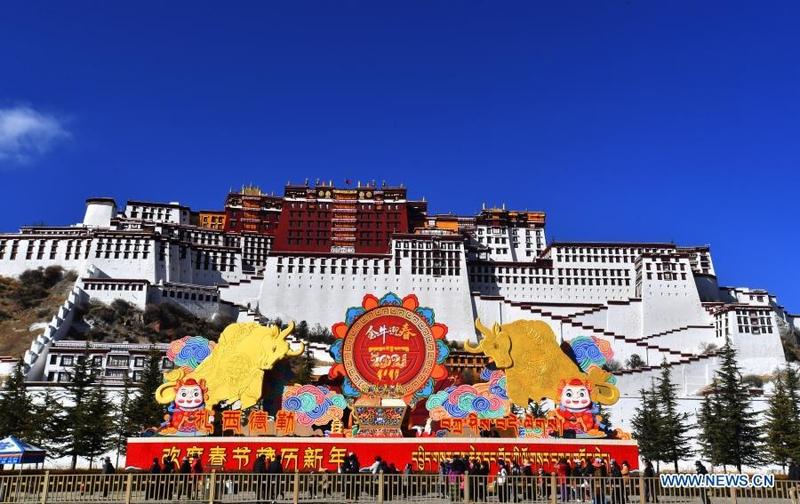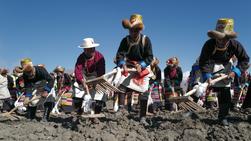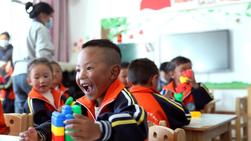 Decorations for the Spring Festival and the Tibetan New Year are seen in front of the Potala Palace in Lhasa, capital of southwest China's Tibet autonomous region, Feb 8, 2021. (CHOGO / XINHUA)
Decorations for the Spring Festival and the Tibetan New Year are seen in front of the Potala Palace in Lhasa, capital of southwest China's Tibet autonomous region, Feb 8, 2021. (CHOGO / XINHUA)
LHASA - Southwest China's Tibet autonomous region will keep pace with other parts of the country in completing the building of a moderately prosperous society in all respects and embarking on a new journey toward socialist modernization, said Qizhala, chairman of the regional government.
Qizhala made the remarks on Saturday evening in a televised speech marking the upcoming 62nd anniversary of Tibet's democratic reform.
Today, the foundation for our development is more solid than ever, development opportunities are better than ever, and the momentum of development is stronger than ever.
Qizhala, Chairman of the regional government, Tibet autonomous region
On March 28, 1959, the Communist Party of China led the people in Tibet to launch the democratic reform, abolishing Tibet's feudal serfdom under theocracy.
In 2009, the regional legislature announced March 28 as a day to commemorate the emancipation of the one million serfs.
The democratic reform liberated the serfs in Tibet, marking a historic leap in the social system. Now, with the poverty alleviation drive, the region's 3.5 million people are ushering in a moderately prosperous life. It is a historic leap in their life, Qizhala said.
ALSO READ: Tibet records nation's top GDP growth rate
"Today, the foundation for our development is more solid than ever, development opportunities are better than ever, and the momentum of development is stronger than ever," he said.
 Farmers participate in spring rituals to mark the start of this year's plowing season in Lhokha, Tibet autonomous region, on March 16, 2021. Villagers gathered in the fields after sunrise for prayers, songs and traditional dances to express hope for a year of good harvests. (PHOTO / XINHUA)
Farmers participate in spring rituals to mark the start of this year's plowing season in Lhokha, Tibet autonomous region, on March 16, 2021. Villagers gathered in the fields after sunrise for prayers, songs and traditional dances to express hope for a year of good harvests. (PHOTO / XINHUA)
Tibet has built extensive networks of railways, air routes and highways, with tap water, electricity and the internet accessible in villages and households, Qizhala said, adding that the region has huge potentials for future development.
He noted that the main working-age population in Tibet has received 10.2 years of education, and the average life expectancy in the region has increased from 35.5 years to 71.1 years.
READ MORE: Education, tourism help Tibet hit new heights
"Farmers and herders don't have to worry about food, clothing and medical services and are living much better lives," he said.
 Children attend a class at a kindergarten in Lhokha, Tibet autonomous region, on Oct 14, 2020. (ZOU HONG / CHINA DAILY)
Children attend a class at a kindergarten in Lhokha, Tibet autonomous region, on Oct 14, 2020. (ZOU HONG / CHINA DAILY)
Qizhala said Tibet's future is closely linked with that of the great motherland, and its development and progress are inseparable from the stability and prosperity of the motherland.
Tibet will always be an inalienable part of China, he said.
Tibet will focus on maintaining stability, adhere to the system of regional ethnic autonomy, constantly heighten a sense of identity of the Chinese nation, and enhance the anti-separatist awareness among all people in Tibet, Qizhala said.
Tibet will continue to consolidate the poverty reduction outcomes and push rural vitalization to strive for common prosperity, he said.


